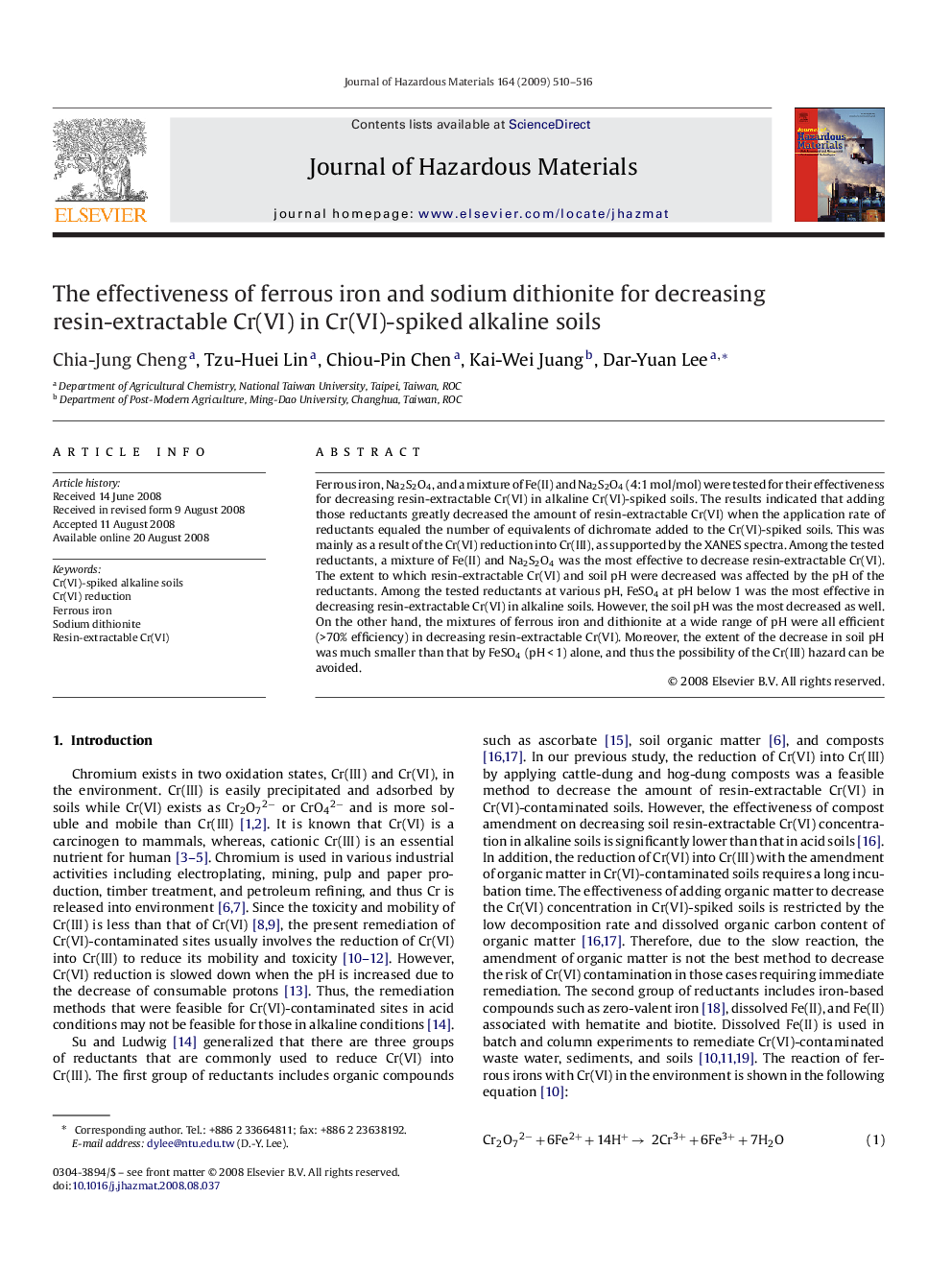| Article ID | Journal | Published Year | Pages | File Type |
|---|---|---|---|---|
| 582453 | Journal of Hazardous Materials | 2009 | 7 Pages |
Abstract
Ferrous iron, Na2S2O4, and a mixture of Fe(II) and Na2S2O4 (4:1Â mol/mol) were tested for their effectiveness for decreasing resin-extractable Cr(VI) in alkaline Cr(VI)-spiked soils. The results indicated that adding those reductants greatly decreased the amount of resin-extractable Cr(VI) when the application rate of reductants equaled the number of equivalents of dichromate added to the Cr(VI)-spiked soils. This was mainly as a result of the Cr(VI) reduction into Cr(III), as supported by the XANES spectra. Among the tested reductants, a mixture of Fe(II) and Na2S2O4 was the most effective to decrease resin-extractable Cr(VI). The extent to which resin-extractable Cr(VI) and soil pH were decreased was affected by the pH of the reductants. Among the tested reductants at various pH, FeSO4 at pH below 1 was the most effective in decreasing resin-extractable Cr(VI) in alkaline soils. However, the soil pH was the most decreased as well. On the other hand, the mixtures of ferrous iron and dithionite at a wide range of pH were all efficient (>70% efficiency) in decreasing resin-extractable Cr(VI). Moreover, the extent of the decrease in soil pH was much smaller than that by FeSO4 (pHÂ <Â 1) alone, and thus the possibility of the Cr(III) hazard can be avoided.
Related Topics
Physical Sciences and Engineering
Chemical Engineering
Chemical Health and Safety
Authors
Chia-Jung Cheng, Tzu-Huei Lin, Chiou-Pin Chen, Kai-Wei Juang, Dar-Yuan Lee,
